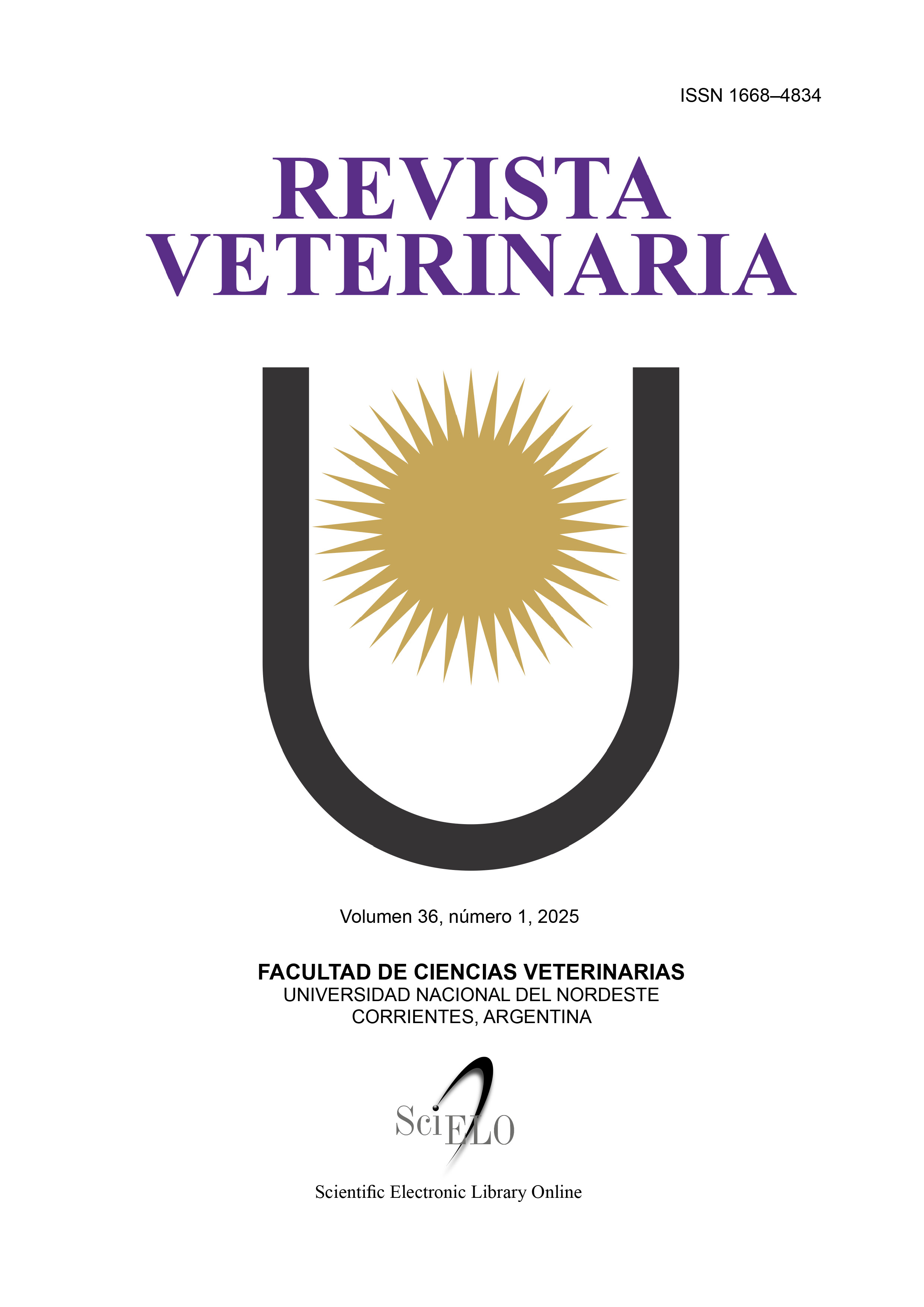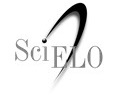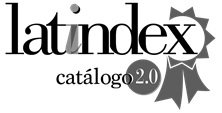Reducción de la replicación viral in vitro de alfaherpesvirus caprino 1 (CpHV-1) por tratamiento antiviral natural de extractos de plantas
DOI:
https://doi.org/10.30972/vet.3618088Palabras clave:
herpesvius, tratamiento, L. divaricata, M. verticillata, P. quadrangularisResumen
El herpesvirus caprino 1 (CpHV-1) se distribuye mundialmente siendo responsable de pérdidas económicas. La aplicación de aciclovir interfiere en la replicación viral con distintos grados de eficacia, pero no impide el establecimiento de latencia. Debido a los costos y efectos secundarios que producen los fármacos antihipertensivos, la búsqueda de nuevos agentes quimioterapéuticos es fundamental para el tratamiento y control de las enfermedades virales. El objetivo del trabajo es evaluar y comparar la actividad antiviral in vitro de tres plantas nativas de Argentina como tratamiento antiviral terapéutico contra CpHV-1. Se utilizaron Larrea divaricata, Minthostachys verticillata y Parastrephia quadrangularis. Se analizaron cuatro parámetros: Concentración Citotóxica 50 (CC50), Concentración Inhibitoria 50 (CI50), cuantificación por ensayo de placa y titulación viral. El extracto de L. divaricata mostró la menor citotoxicidad (2,4 mg ml-1). El mejor SI (índice de selectividad) se obtuvo en el extracto de M. verticillata (10). Los extractos de L. divaricata y P. quadrangularis son los compuestos que mostraron el mayor efecto antiviral (90% y 75%, respectivamente), en comparación con los controles no tratados, en los que se observó la mayor reducción en el tamaño de la placa. La mayor inhibición de la replicación viral se observó cuando se evaluó el título viral cuando las monocapas fueron tratadas con L. divaricata (al menos disminución del 35%). Con el ensayo de combinación de L. divaricata y M. verticillata se observó la mayor reducción de los títulos virales. Los resultados generales proporcionan evidencia de que L. divaricata y M. verticillata podrían ser fuentes potenciales de nuevos fármacos anti-CpHV-1.
Descargas
Citas
.
Alonso MR, Marrassini C, Saint Martin M, Cogoi L, Peralta I, Anesini C. Larrea divaricata a native Argentine plant with potential activity against SARS-CoV-2? Bol Latinoam Caribe Plant Med Aromat. 2023; 22(6): 747-769.
Álvarez SG, Dubed EM, Noa RE, Navea LLM, Pérez Guevara MT, Rodríguez A. Validación del método de titulación del virus de la inmunodeficiencia humana tipo 1. Rev Cubana Med Trop. 2009; 61(2): 1-9.
Anesini C, Boccio J, Cremaschi G, Genaro A, Zubillaga M, Sterin Borda L, Borda ES. In vivo antitumoural activity and acute toxicity study of Larrea divaricata Cav. extract. Phytother Res. 1997; 11: 521-523.
Ardiles A, Barrientos R, Simirgiotis MJ, Bórquez J, Sepúlveda B, Areche C. Gastroprotective activity of Parastrephia quadrangularis (Meyen), cabrera from the atacama desert. Molecules. 2018; 23: 2361.
Ayma L, Hervé D, Sauvain M. Efecto del extracto acuoso de la Ch’illka (Parastrephia lucida) en el control de la sarna en llamas. In: Genin D, Picht HJ, Lizarazu R, Rodriguez T. (Eds.). Orstom. Conpac-Oruro. IBTA, 1995, pp. 185-194.
Basbaum AI, Bautista DM, Scherrer G, Julius D. Cellular and molecular mechanisms of pain. Cell. 2009; 139(2): 267-84.
Bigliani MC, Grondona E, Zunino PM, Ponce AA. Effects of Cecropia pachystachya and Larrea divaricata aqueous extracts in mice. Hum Exp Toxicol. 2010; 29: 601-606.
Borenfreund E, Puerner JA. Toxicity determined in vitro by morphological alterations and neutral red absorption. Toxicol Lett. 1985; 24(2-3): 119-124.
Camero M, Bellacicco AL, Tarsitano E, Decaro N, Martella V, Tempesta M, Buonavoglia C. Intravaginal administration of an inactivated vaccine prevents lesions induced by caprine herpesvirus-1 in goats. Vaccine. 2007; 25(9): 1658-61.
Camero M1, Crescenzo G, Marinaro M, Tarsitano E, Bellacicco AL, Armenise C, Buonavoglia C, Tempesta M. Cidofovir does not prevent caprine herpesvirus type-1 neural latency in goats. Antivir Ther. 2010; 15(5): 785-8.
Camero M, Buonavoglia D, Lucente MS, Losurdo M, Crescenzo G, Trerotoli P, Casalino E, Martella V, Elia G, Tempesta M. Enhancement of the antiviral activity against caprine herpesvirus type 1 of Acyclovir in association with Mizoribine. Res Vet Sci. 2017; 111: 120-123.
Camero M, Lanave G, Catella C, Capozza P, Gentile A, Fracchiolla G, Britti D, Martella V, Buonavoglia C, Tempesta M. Virucidal activity of ginger essential oil against caprine alphaherpesvirus-1. Vet Microbiol. 2019; 230: 150-155.
Candanosa IE, AIE, Sierra GM, Sánchez CA, SGG, Méndez BA, Cobos ML, Álvarez Ramírez L. Vulvovaginitis pustular sugerente a herpesvirus caprino- 1 en cabras (Querétaro, México). Vet. Méx. 2011; 42(3): 233-243.
Cariddi LN, Panero A, Demo MS, Sabini LI, Maldonado AM. Inhibition of immediate-type allergic reaction by Minthostachys verticillata (griseb.) epling essential oil. J. Essent Oil Res. 2007; 19(2): 190-196.
Chen H, Teng L, Li JN, Park R, Mold DE, Gnabre J, Hwu JR, Tseng WN, Huang RC. Antiviral activities of methylated nordihydroguaiaretic acids. 2. Targeting herpes simplex virus replication by the mutation insensitive transcription inhibitor Tetra-O-methyl-NDGA. J. Med Chem. 1998; 41(16): 3001-3007.
D’Almeida RE, Alberto MR, Quispe C, Schmeda-Hirschmann G, Isla MI. Antimicrobial phenylpropanoids from the Argentinean highland plant Parastrephia lucida (Meyen) Cabrera. J Ethnopharmacol. 2012; 142(2): 407-414.
Davison AJ. Herpesvirus systematics. Vet Microbiol. 2010; 143(1): 52-69.
Di Ciaccio LS, Spotorno VG, Córdoba Estévez MM, Ríos DJL, Fortunato RH, Salvat AE. Antifungal activity of Parastrephia quadrangularis (Meyen) Cabrera extracts against Fusarium verticillioides. Lett Appl Microbiol. 2018; 66(3): 244-251.
Echiburu-Chau C, Pastén L, Parra C, Bórquez J, Mocan A, Simirgiotis MJ. High resolution UHPLC-MS characterization and isolation of main compounds from the antioxidant medicinal plant Parastrephia lucida (Meyen). Saudi Pharm J. 2017; 25(7): 1032-1039.
Engels M, Gelderblom H, Darai G, Ludwig H. Goat herpesviruses: Biological and physicochemical properties. J Gen Virol. 1983; 64(10): 2237-2247.
Engels M, Loepfe E. Wild P, Schraner E, Wyler R. The genome of caprine herpesvirus 1: Genome structure and relatedness to bovine herpesvirus 1. J Gen Virol.1987; 68(7): 2019-2023.
Escobar FM, Magnoli A, Sabini MC, Cariddi LN, Bagnis G, Soltermann A, Cavaglier L. Minthostachys verticillata essential oils as potential phytogenic additives and chemoprotective strategy on aflatoxin B1 toxicity. J. Appl. Anim. Res.2019; 47(1): 217-222.
Grewal AS, Wells R. Vulvovaginitis of goats due to a herpesvirus. Aust Vet J. 1986; 63(3): 79-82.
He T, Tang Q, Zeng N, Gou L, Liu JW, Yang J, Yu L, Wang Z, Gong XP. Study on effect and mechanism of volatile oil of schizonepetae herba and its essential components against influenza virus. Zhongguo Zhong Yao Za Zhi. 2013; 38(11): 1772-7.
Helwig NE, Hong S, Hsiao-wecksler ET. Estudio de la actividad antibacteriana de la fracción butanólica de Passiflora quadrangularis en aislamientos clínicos de Helicobacter pylori de origen colombiano. Rep Inst Javeriano. 2018; 1-7.
Hilfiger L, Triaux Z, Marcic C, Héberlé E, Emhemmed F, Darbon P, Marchioni E, Petitjean H, Charlet A. Anti-Hyperalgesic Properties of Menthol and Pulegone. Front Pharmacol. 2021; 12: 753873.
Keuser V, Gogev S, Schynts F, Thiry E. Demonstration of generalized infection with caprine herpesvirus 1 diagnosed in an aborted caprine fetus by PCR. Vet Res Commun. 2002; 26(3): 221-226.
Konigheim B, Aguilar J, Goleniowski M, Contigiani M. Antiviral activity of Larrea divaricata extracts on Junin virus. Mol Med Chem. 2006; 10: 12-13.
Ladelfa F, Del Médico Zajac MP, Kotsias F, Delgado F, Muylkens TJ, Thiry E, Romera SA. Comparative study on the in vitro and in vivo properties of two bovine herpesvirus-5 reference strains. Acta Vet Scand. 2011; 53: 37.
Lanave G, Zizzadoro C, Trerotoli P, Martella V, Buonavoglia C , Tempesta M , Camero M Antiviral activity of PHA767491 on Caprine alphaherpesvirus 1 in vitro. Res Vety Sci. 2019; 126: 113-117.
Lü JM, Nurko J, Weakley SM, Jiang J, Kougias P, Lin PH, Yao Q, Chen C. Molecular mechanisms and clinical applications of nordihydroguaiaretic acid (NDGA) and its derivatives: An update. Med Sci Monit. 2010; 16(5): RA93-R100.
Martinez F, Mugas ML, Aguilar JJ, Marioni J, Contigiani MS, Núñez Montoya SC, Konigheim BS. First report of antiviral activity of nordihydroguaiaretic acid against Fort Sherman virus (Orthobunyavirus). Antiviral Res. 2021; 187: 104976.
Martinez F, Ghietto LM, Lingua G, Mugas ML, Aguilar JJ, Gil P, Pisano MB, Marioni J, Paglini MG, Contigiani MS, Núñez-Montoya SC, Konigheim BS. New insights into the antiviral activity of nordihydroguaiaretic acid: Inhibition of dengue virus serotype 1 replication. Phytomedicine. 2022; 106: 154424.
Montagnaro S, Ciarcia R, De Martinis C, Pacilio C, Sasso S, Puzio MV, De Angelis M, Pagnini U, Boffo S, Kenez I, Iovane G, Giordano A. Modulation of apoptosis by caprine herpesvirus 1 infection in a neuronal cell line. J Cell Biochem. 2013; 114(12): 2809-2822.
Ordaz-Trinidad N, Dorantes-Álvarez L, Salas-Benito, J, Barrón-Romero BL, Salas-Benito M, Nova-Ocampo MD. Citotoxicidad y actividad antiviral de extractos de chiles (Capsicum spp). Polibot. 2018; (46): 273-285.
Palavecino Ruiz MDP, Ordóñeza RM, Isla MI, Sayago JE. Activity and mode of action of Parastrephia lepidophylla ethanolic extracts on phytopathogenic fungus strains of lemon fruit from Argentine Northwest. Postharvest Biol and Technol. 2016; 114: 62-68.
Park R, Giza PE, Mold DE, Huang RCC. Inhibition of HSV-1 replication and reactivation by the mutation-insensitive transcription inhibitor tetra-O-glycyl-nordihydroguaiaretic acid. Antiviral Res. 2003; 58(1): 35-45.
Pasquereau S, Nehme Z, Haidar Ahmad S, Daouad F, Van Assche J, Wallet C, Schwartz C, Rohr O, Morot-Bizot S, Herbein G. Resveratrol inhibits hcov-229e and sars-cov-2 coronavirus replication in vitro. Viruses. 2021; 13(2): 354.
Peralta I, Martino R, Davicino R, Gorzalczany S, Alonso R, Anesini C. Systemic and local toxicity assay of an aqueous extract of Larrea divaricata Cav.: Role of NDGA. Int. J. Pharm. Sci. Res. 2015; 6(7): 2790-2798.
Peralta I, Marrassini C, Saint Martin M, Cogoi L, Alonso MR, Gugliucci A, Anesini C. Larrea divaricata: anti-inflammatory and antioxidant effects of on macrophages and low-density lipoproteins. BMC Comp Med and Therapies. 2022; 22(1): 84.
Primo V, Rovera M, Zanon S, Oliva M, Demo M, Daghero J, Sabini L. Determination of the antibacterial and antiviral activity of the essential oil from Minthostachys verticillata (Griseb.) Epling. Rev Argent Microbiol. 2001; 33(2): 113-117.
Quintans JSS, Shanmugam S, Heimfarth L, Araújo AAS, Almeida JRGDS, Picot L, Quintans-Júnior LJ. Monoterpenes Modulating Cytokines - A Review. Food Chem. Toxicol. 2019; 123: 233-257.
Reed L, Muench H. Asimple method of estimating fifty per cent endopoints l ’ 2. In: The American Journal of Hygiene. 1938; 27(3). Disponible en: https://academic.oup.com/aje/article-abstract/27/3/493/99616
Rodríguez Basso A, Carranza A, Zainutti VM, Bach H, Gorzalczany SB. Pharmacologycal activity of peperina (Minthostachys verticillata) on gastrointestinal tract. J Ethnopharmacol. 2021; 269: 113712.
Saz Peiró P, Saz Tejero S. Revisión de tratamientos naturales en infecciones por el HERPES. Med Nat 2012; 6(1): 30-38.
Schuhmacher A, Reichling J, Schnitzler P. Virucidal effect of peppermint oil on the enveloped viruses herpes simplex virus type 1 and type 2 in vitro. Phytomed. 2003; 10(6-7): 504-510.
Sim LY Abd Rani NZ, Husain K. Lamiaceae: An insight on their anti-allergic potential and its mechanisms of action. Front in Pharmacol. 2019; 10: 667.
Soria N, Ramos P. Uso de plantas medicinales en la Atención Primaria de Salud en Paraguay: algunas consideraciones para su uso seguro y eficaz. Mem. Inst. Invest. Cienc. Salud (Impr.). 2015; 13(2): 8-17.
Soto-Acosta R, Bautista-Carbajal P, Syed GH, Siddiqui A, Del Angel RM. Nordihydroguaiaretic acid (NDGA) inhibits replication and viral morphogenesis of dengue virus. Antiviral Res. 2014; 109(1): 132-140.
Stege PW, Davicino RC, Vega AE, Casali YA, Correa S, Micalizzi B. Antimicrobial activity of aqueous extracts of Larrea divaricata Cav (jarilla) against Helicobacter pylori. Phytomed. 2006; 13(9-10): 724-727.
Tarigan S, Webb RF, Kirkland D. Caprine herpesvirus from balanoposthitis. Aust Vet J. 1987; 64(10): 321.
Tempesta M, Pratelli A, Greco G, Martella V, Buonavoglia C. Detection of caprine herpesvirus 1 in sacral ganglia of latently infected goats by PCR. J Clin Microbiol. 1999; 37(5): 1598-1599.
Tempesta M, Pratelli A, Normanno G, Camero M, Buonavoglia D, Greco G, Buonavoglia C. Experimental intravaginal infection of goats with caprine herpesvirus 1. J Vet Med B. 2000; 47(3): 197-201.
Tempesta M, Camero M, Greco G, Pratelli A, Martella V, Buonavoglia C. A classical inactivated vaccine induces protection against caprine herpesvirus 1 infection in goats. Vaccine. 2001; 19(28-29): 3860-3864.
Tempesta M1, Camero M, Bellacicco AL, Tarsitano E, Crescenzo G, Thiry J, Martella V, Decaro N, Elia G, Neyts J, Thiry E, Buonavoglia C. Potent inhibition of genital herpesvirus infection in goats by cidofovir. Antivir Ther. 2007; 12(6): 977-9.
Tempesta M, Crescenzo G, Camero M, Bellacicco AL, Tarsitano E, Decaro N, Neyts J, Martella V, Buonavoglia C. Assessing the efficacy of cidofovir against herpesvirus-induced genital lesions in goats using different therapeutic regimens. Antimicrob Agents Chemother. 2008; 52(11): 4064-4068.
Visintini Jaime MF, Redko F, Muschietti LV, Campos RH, Martino VS, Cavallaro LV. In vitro antiviral activity of plant extracts from Asteraceae medicinal plants. Virol J. 2013; 10: 245.
Vivanco, RFC, and Edwin RAB. Natural antioxidant anti-influenza composition. U.S. Patent No. 9,770,477. 2017.
Vogt MV, Sutil SB, Escobar FM, Sabini MC, Cariddi LN, Torre CV, Zanon SM, Sabini LI. Minthostachys verticillata essentials oil and its major components: antiherpetic selective action in HEp-2 cells. Molecular Med. Chem. 2010; 21: 117-120.
Whitley RJ, Roizman B. Herpes simplex virus infections. Lancet. 2001; 357(9267): 1513-1518.
Zampini IC, Sayago J. Antioxidant and xanthine oxidase inhibitory activities of plant species from the Argentina Puna (Antofagasta, Catamarca). Pharmacol. Ther. 2008; 21: 90-103.
Zampini IC, Cuello S, Alberto MR, Ordoñez RM, D’ Almeida R, Solorzano E, Isla MI. Antimicrobial activity of selected plant species from “the Argentine Puna” against sensitive and multi-resistant bacteria. J Ethnopharmacol. 2009; 124(3): 499-505.
Descargas
Publicado
Cómo citar
Número
Sección
Licencia

Esta obra está bajo una licencia internacional Creative Commons Atribución-NoComercial 4.0.
Política de acceso abierto
Esta revista proporciona un acceso abierto inmediato a su contenido, basado en el principio de que ofrecer al público un acceso libre a las investigaciones ayuda a un mayor intercambio global de conocimiento. La publicación por parte de terceros será autorizada por Revista Veterinaria toda vez que se la reconozca debidamente y en forma explícita como lugar de publicación del original.
Esta obra está bajo una licencia de Creative Commons Reconocimiento-NoComercial 4.0 Internacional (CC BY-NC 4.0)










.jpg)
.jpg)



